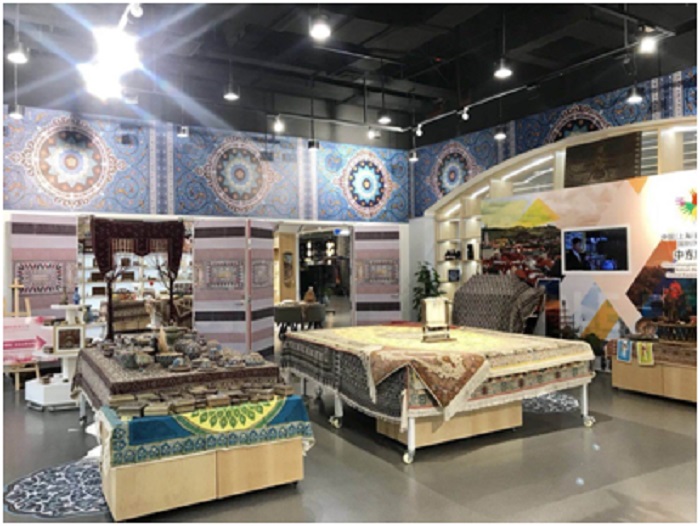



COVID-19 has postponed outbound trips for many Chinese, but the Belt and Road National Pavilion set up at the China (Shanghai) Pilot Free Trade Zone (FTZ) are enabling them to have a taste of exotic environment without having to cross the border.
The Belt and Road National Pavilion project was inaugurated ahead of the opening of the 2nd China International Import Expo (CIIE) by the China (Shanghai) Pilot Free Trade Zone National (Regional) Center.
At present, the project includes pavilions of more than 20 countries and regions, such as Spain, Belgium, South Africa, Russia, Iran, and Mongolia, exhibiting and selling thousands of imported high-quality products.
In the Syrian national pavilion, Aleppo soaps has been drawing huge attention. These hard soaps handmade with olive oil come from Jubilee Soaps, largest soap maker in Syria. They are very popular around the world because of their tastefully selected materials and long history, said a staff worker at the pavilion. However, according to the staff worker, Jubilee Soaps was blown up in war and only a few hundred pieces are now left in the world.
Imported products are nothing new to Chinese consumers who used to shop overseas and are today presented with a wider selection of imported products at home.
The Belt and Road National Pavilion has not only provided more high-quality products from various countries for Chinese consumers, but also established a sales and display platform for CIIE exhibitors at the consumer end and stimulated the spillover effect of the event.
In Thailand’s national pavilion, rubber latex products and Thai snacks are particularly welcomed by consumers.
The pavilion has made special labels for products from the CIIE and the sales of rubber latex products and durian snacks have reached tens of million yuan, said Cheng Yubo, managing director of Thai Pavilion Corporate Co., Ltd.
The Belt and Road National Pavilion also empowers CIIE exhibitors to connect with relevant industries and enterprises in the FTZ, and expands trade channels at the business end.
Cheng believes that the Belt and Road National Pavilion serves as a permanent platform for the CIIE from which consumers can buy high-quality imported products at any time. The project also drives the development of enterprises in East China, he added.
Apart from housing national and regional pavilions, the 7,000-square meter Belt and Road National Pavilion is also equipped with modern multimedia facilities such as 4D cinema, broadcast rooms, and super-large screens, making it a display and promotion platform integrating trade and retail, cultural exchanges, as well as economy and investment.
The construction of the Belt and Road National Pavilion is a major attempt made by the China (Shanghai) Pilot FTZ to facilitate the integration of commerce and trade, noted Zhang Hao, deputy general manager of Shanghai Waigaoqiao Free Trade Zone Group Co., Ltd., which helped facilitate the construction of the pavilion.
The abundant overseas commodity resources in the FTZ need to provide people with tangible consumer and cultural experiences while building a trading platform for companies, Zhang added.


The Executive and members of the.


The Acting Director, FCT Directorate of.


President Bola Ahmed Tinubu has been.



Barely a month after resignation of.


An Abuja based Legal Practitioner, Osuagwu.



Convener of Equitable Remedy, Mrs. Magaret.


Contractors handling the contract for city.


Nigerian government may have concluded plans.


The Diplomatic Correspondents Association of Nigeria.


A rights group, “Follow Me Talk.
Leave a Comment